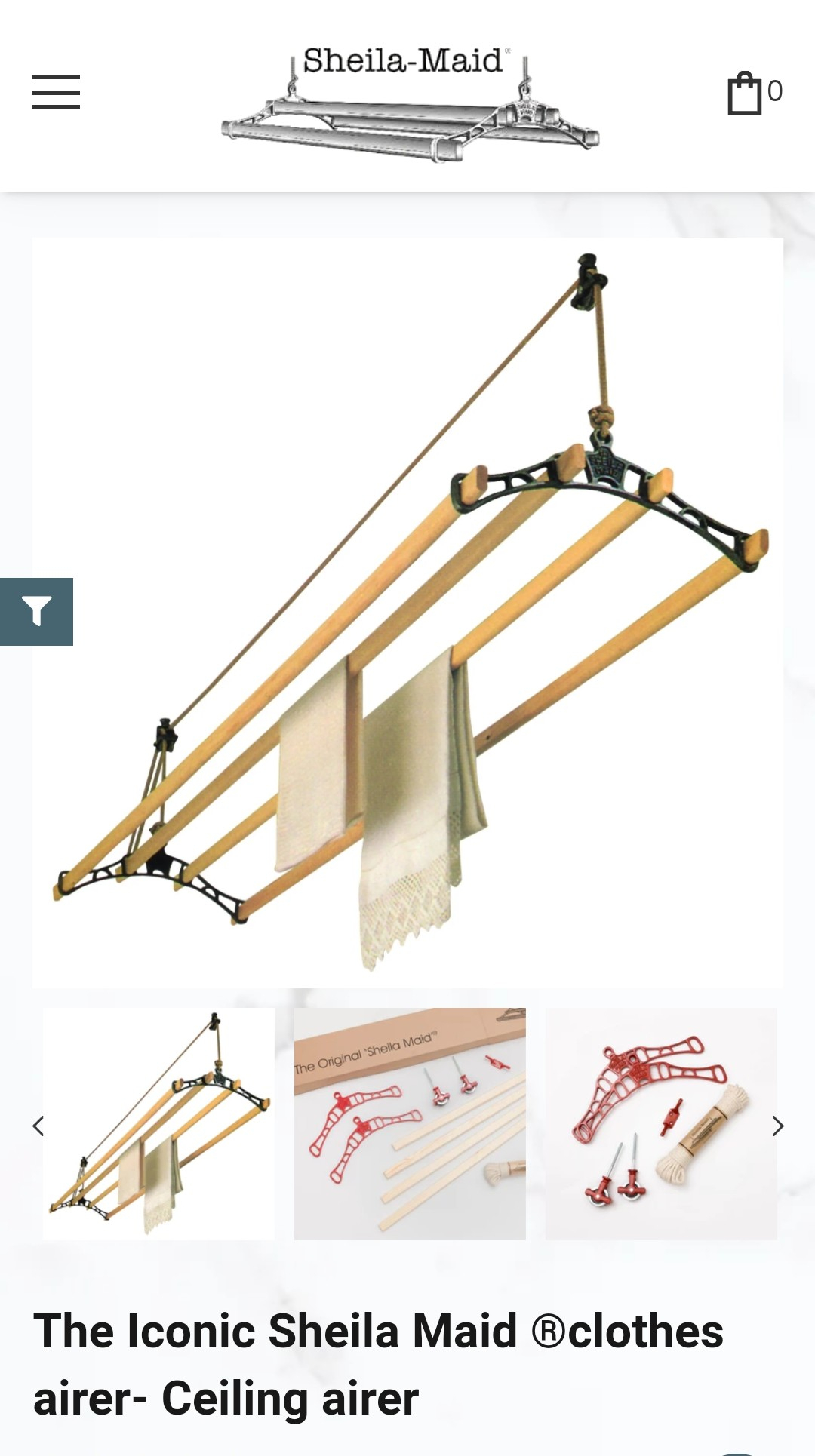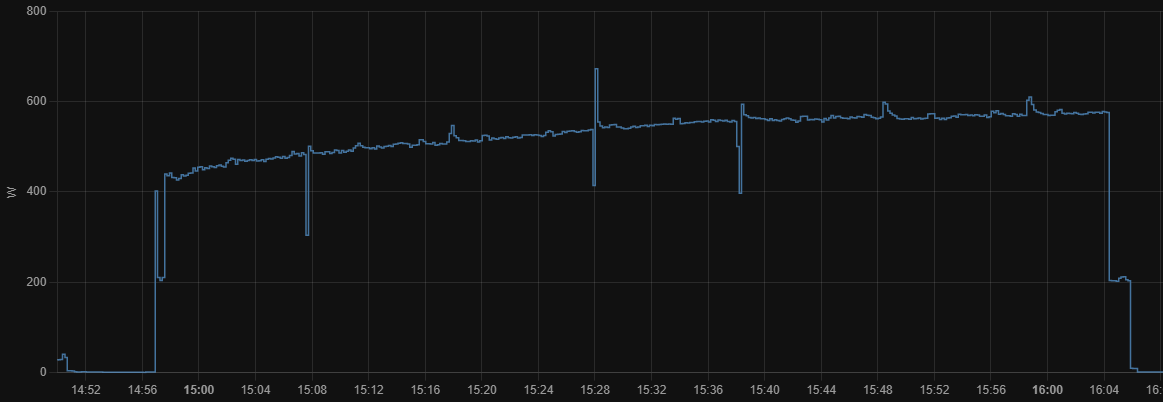We’d like to remind Forumites to please avoid political debate on the Forum.
This is to keep it a safe and useful space for MoneySaving discussions. Threads that are – or become – political in nature may be removed in line with the Forum’s rules. Thank you for your understanding.
The MSE Forum Team would like to wish you all a Merry Christmas. However, we know this time of year can be difficult for some. If you're struggling during the festive period, here's a list of organisations that might be able to help
📨 Have you signed up to the Forum's new Email Digest yet? Get a selection of trending threads sent straight to your inbox daily, weekly or monthly!
Has MSE helped you to save or reclaim money this year? Share your 2025 MoneySaving success stories!
The search for the most energy efficient tumble dryers
Comments
-
If you have space (especially dead space) which most people do, do t throw it.greyteam1959 said:
Just inherited one of these during my late father's house clearance.Coffeekup said:I use one of these in the winter. On the landing hallway above the top if the stairs where the tends to congregate. Clothes/towels are dry within 8 hour's even with the heating off.
A number of people have commented saying what a good idea it is and how good it looks.
An original 1960s one.0 -
wittynamegoeshere said:We used to hang all our clothes on racks indoors, thinking we were saving money and the planet. We just ended up with very damp air and black mould in many places.Having dried indoors for years prior to getting a washer-dryer, without those problems, that sounds like operator error.
Having had a washer-dryer for about a decade, that sounds like operator error too.We also used to have a combined washer/dryer, any drying came out cooked, shrunken and hard.N. Hampshire, he/him. Octopus Intelligent Go elec & Tracker gas / Vodafone BB / iD mobile. Ripple Kirk Hill Coop member.Ofgem cap table, Ofgem cap explainer. Economy 7 cap explainer. Gas vs E7 vs peak elec heating costs, Best kettle!
2.72kWp PV facing SSW installed Jan 2012. 11 x 247w panels, 3.6kw inverter. 34 MWh generated, long-term average 2.6 Os.0 -
Where does a heat pump drier source the heat?
Isn't there a small space heating cost too (if using when the house is being heated), in addition to the drivers electricity use.
Does this work out similar to the extra heating used when drying by hanging indoors?0 -
Yes, the heat 'gained' by using a heat pump comes from the environment around it. If it's indoors then it extracts heat from the air indoors. However, as long as it isn't vented outside, the heat is not lost but simply recycled inside the house.k_man said:Where does a heat pump drier source the heat?
Isn't there a small space heating cost too (if using when the house is being heated), in addition to the drivers electricity use.
Does this work out similar to the extra heating used when drying by hanging indoors?
Obviously a conventional dryer adds lots more heat to the environment around it so, for condenser dryers, the electricity used does provide some (potentially) useful heating for the home.
The biggest issue with drying washing indoors is that you need to ventilate the damp air, and that lets heat escape to outside. That is prevented with the dehumidifier approach at the expense of more energy being used, but this is also retained as (potentially) useful heat.
While evaporation will have a cooling effect on the clothes, there is no net loss of energy unless the damp air is then ventilated.0 -
When cold outside we dry washing in spare bedroom on clothes horse.....Door closed / window open one notch never a problem with condensationwittynamegoeshere said:Air-drying clothes inside is not generally a good idea, unless you have a very well ventilated room. In some countries they commonly have special drying rooms, which is basically a draughty room, usually on a corner, that's well insulated from the rest of the house. So you can dry for free whatever the weather. It also prevents sun-bleaching, which is another issue with drying outdoors. It's a very good idea, although whether you ever get the building cost back in energy savings is questionable.We used to hang all our clothes on racks indoors, thinking we were saving money and the planet. We just ended up with very damp air and black mould in many places.Also, evaporating water actively cools the air, just like the refrigerant evaporating in an air conditioner or fridge does. It makes the air cooler, so the heating will be powered on more as a result of all that chilling. So it's not free, it costs extra on the heating bill at the same time as rotting the building from the inside.We also used to have a combined washer/dryer, any drying came out cooked, shrunken and hard. Getting the heat pump dryer was a bit of a revelation, almost everything goes in it so we have nice dry air in the place, soft and fluffy laundry and I have no eco-guilt due to the pretty trivial amount of energy it uses.0 -
Thanks for that.Petriix said:
Yes, the heat 'gained' by using a heat pump comes from the environment around it. If it's indoors then it extracts heat from the air indoors. However, as long as it isn't vented outside, the heat is not lost but simply recycled inside the house.k_man said:Where does a heat pump drier source the heat?
Isn't there a small space heating cost too (if using when the house is being heated), in addition to the drivers electricity use.
Does this work out similar to the extra heating used when drying by hanging indoors?
Obviously a conventional dryer adds lots more heat to the environment around it so, for condenser dryers, the electricity used does provide some (potentially) useful heating for the home.
The biggest issue with drying washing indoors is that you need to ventilate the damp air, and that lets heat escape to outside. That is prevented with the dehumidifier approach at the expense of more energy being used, but this is also retained as (potentially) useful heat.
While evaporation will have a cooling effect on the clothes, there is no net loss of energy unless the damp air is then ventilated.
Seems the wastage with drying is venting the warmth from the dryer, or ventilating the room if hanging clothes to dry.
Condensing or heat pump dryers, or dehumidifiers can mitigate this, but potentially at the cost of electric vs gas heating.1 -
As promised I've returned with data on the A++ 8kg Logik I bought.
I ran a relatively small load of... smalls a couple of pairs of chinos and 2 shirts. Maximum power I observed was 600 watts, the cycle took 1hr 20 minutes and used 0.6kWh.
4.29kWp Solar system, 45/55 South/West split in cloudy rainy Cumbria.3 -
Thanks for that advice as when I lived in a property with no heating other than one room ,I dried cloths on a jury rigged washing line strung up in the spare bedroomwittynamegoeshere said:Air-drying clothes inside is not generally a good idea, unless you have a very well ventilated room. In some countries they commonly have special drying rooms, which is basically a draughty room, usually on a corner, that's well insulated from the rest of the house. So you can dry for free whatever the weather. It also prevents sun-bleaching, which is another issue with drying outdoors. It's a very good idea, although whether you ever get the building cost back in energy savings is questionable.We used to hang all our clothes on racks indoors, thinking we were saving money and the planet. We just ended up with very damp air and black mould in many places.Also, evaporating water actively cools the air, just like the refrigerant evaporating in an air conditioner or fridge does. It makes the air cooler, so the heating will be powered on more as a result of all that chilling. So it's not free, it costs extra on the heating bill at the same time as rotting the building from the inside.We also used to have a combined washer/dryer, any drying came out cooked, shrunken and hard. Getting the heat pump dryer was a bit of a revelation, almost everything goes in it so we have nice dry air in the place, soft and fluffy laundry and I have no eco-guilt due to the pretty trivial amount of energy it uses..The mould produced on the ceiling s and walls though after a year or so was intense .
Now I m in a large bungalow with a rear large conservatory with lots of ventilation I can see that will be my drying room hopefully with much less chance of mould growth.. I don t want that back again ever as even painting over it with anti mould paint just slowed its return .1 -
Many of us have been drying clothes indoors for years, if not decades, and have no issues with mould.SAC2334 said:
Thanks for that advice as when I lived in a property with no heating other than one room ,I dried cloths on a jury rigged washing line strung up in the spare bedroomwittynamegoeshere said:Air-drying clothes inside is not generally a good idea, unless you have a very well ventilated room. In some countries they commonly have special drying rooms, which is basically a draughty room, usually on a corner, that's well insulated from the rest of the house. So you can dry for free whatever the weather. It also prevents sun-bleaching, which is another issue with drying outdoors. It's a very good idea, although whether you ever get the building cost back in energy savings is questionable.We used to hang all our clothes on racks indoors, thinking we were saving money and the planet. We just ended up with very damp air and black mould in many places.Also, evaporating water actively cools the air, just like the refrigerant evaporating in an air conditioner or fridge does. It makes the air cooler, so the heating will be powered on more as a result of all that chilling. So it's not free, it costs extra on the heating bill at the same time as rotting the building from the inside.We also used to have a combined washer/dryer, any drying came out cooked, shrunken and hard. Getting the heat pump dryer was a bit of a revelation, almost everything goes in it so we have nice dry air in the place, soft and fluffy laundry and I have no eco-guilt due to the pretty trivial amount of energy it uses..The mould produced on the ceiling s and walls though after a year or so was intense .
Now I m in a large bungalow with a rear large conservatory with lots of ventilation I can see that will be my drying room hopefully with much less chance of mould growth.. I don t want that back again ever as even painting over it with anti mould paint just slowed its return .
But it does rely on the drying room having some method of venting, to ensure the moisture doesn't stay in the room.
0 -
That's interesting maybe about 1kwh on a full load.Spies said:As promised I've returned with data on the A++ 8kg Logik I bought.
I ran a relatively small load of... smalls a couple of pairs of chinos and 2 shirts. Maximum power I observed was 600 watts, the cycle took 1hr 20 minutes and used 0.6kWh.
Be good when you try a full load0
Confirm your email address to Create Threads and Reply

Categories
- All Categories
- 352.9K Banking & Borrowing
- 253.9K Reduce Debt & Boost Income
- 454.7K Spending & Discounts
- 246K Work, Benefits & Business
- 602.1K Mortgages, Homes & Bills
- 177.8K Life & Family
- 259.9K Travel & Transport
- 1.5M Hobbies & Leisure
- 16K Discuss & Feedback
- 37.7K Read-Only Boards







